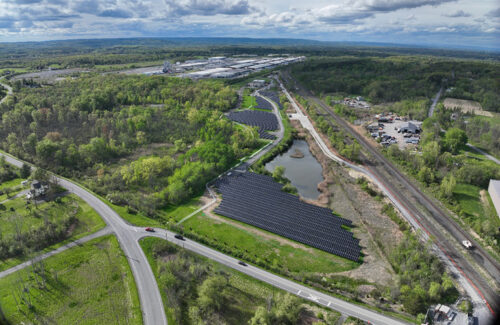Nautilus Solar Energy announced the development of its first community solar project on a former Defense Base (FUDS). This innovative project is located near the Gilderland Northeast Industrial Park in Albany County, New York, demonstrating how to transform debt into important environmental assets. This 2.8 megawatt project will provide clean energy to over 260 households in New York and major users within the National Grid utility area.
Eric LaMora, Executive Director of Community Solar Energy at Nautilus Solar Energy, said, "The successful development of this community solar farm at the FUDS site sets a precedent for renewable energy projects. This is a proud moment for Nautilus as we have contributed to the transition to clean energy while promoting local economic growth
The area is located on the site of the former municipal landfill and incineration pit in Altamont. It was originally the Schenectady Army Warehouse Wahisville area and was an important facility of the United States Department of the Army from 1941 to 1969. This warehouse played a crucial role in receiving, storing, and transporting military supplies during World War II and the Korean War. The US Army Corps of Engineers conducted extensive environmental maintenance on the site in accordance with the Defense Environmental Recovery Plan (DERP-FUDS). Therefore, the development of community solar power plants has adopted special measures to protect the land. For example, photovoltaic arrays are installed as fixed inclined ballast systems on vegetation landfill cover plates to ensure minimal interference with the underlying structure.
Community solar power plants allow users who want to enjoy the benefits of solar energy but cannot install solar panels in their own homes to order community solar energy at prices lower than standard electricity service rates. Community solar supports New York State's Climate Leadership and Community Protection Act (Climate Act), which requires the state to obtain 70% of its electricity from renewable sources by 2030. The bill also ensures that at least 35% of clean energy investment returns directly benefit disadvantaged communities (DAC) and low - to middle-income (LMI) users.
The construction of this project has created employment opportunities for the local area and supported full-time positions dedicated to electrical maintenance and on-site vegetation management.



